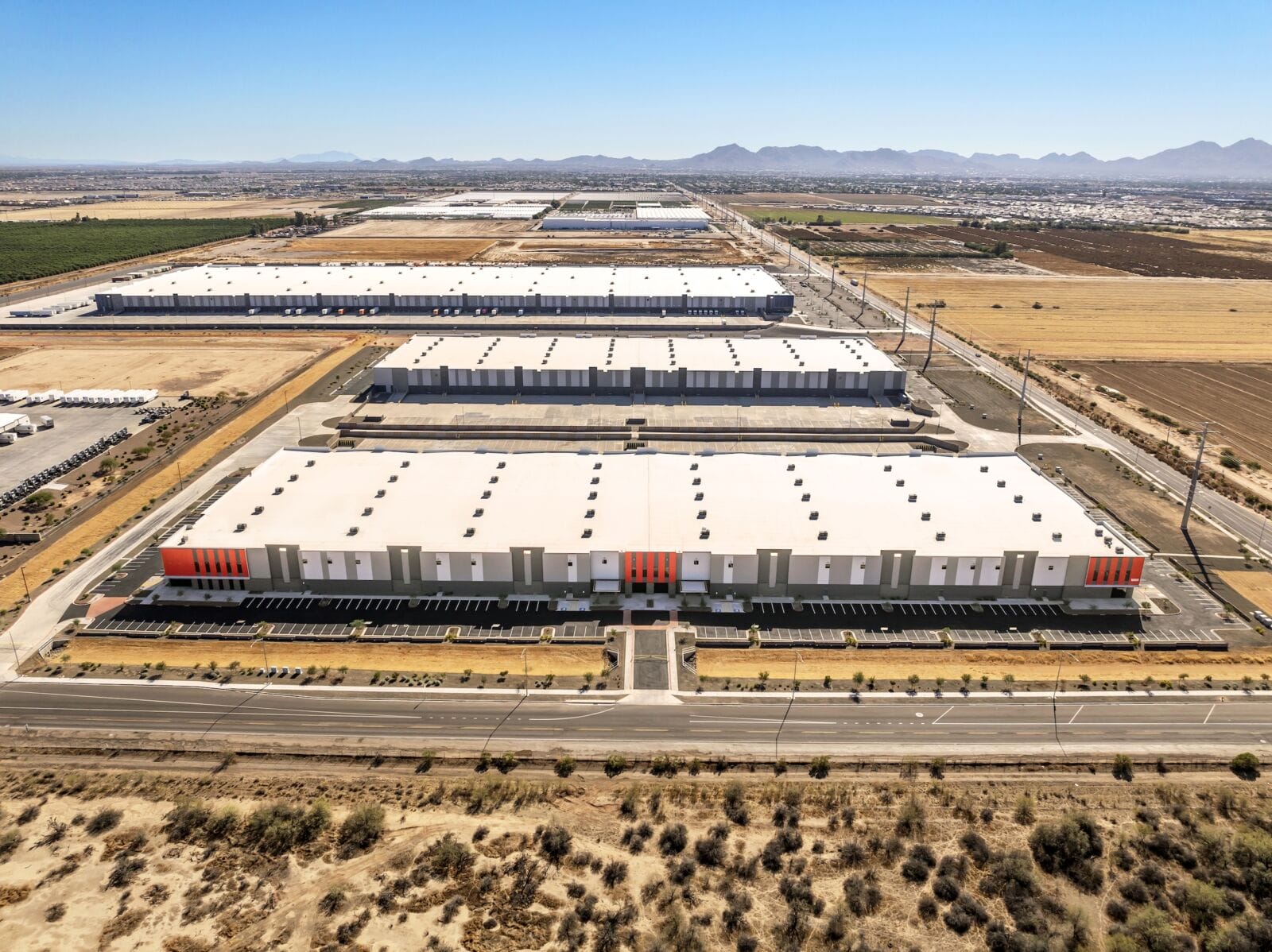CRG, the national real estate development and investment firm, announced that Hadrian, an advanced manufacturing company building AI-powered factories for America, will establish a large-scale manufacturing and software hub at the 269,500 square feet at Building A of The Cubes at Mesa Gateway. Known as Factory 3 (F3), the advanced manufacturing facility represents a $200 million investment by Hadrian and will create 350 new jobs in the region. F3 is slated to be fully operational by January 2026 — just six months from now — demonstrating Hadrian’s ability to launch new production capacity at unprecedented speed.
The new Mesa facility will bolster domestic manufacturing for critical aerospace and defense systems, strengthening U.S. supply chains in support of national security. Powered by Hadrian’s proprietary “Opus” software platform for production autonomy, the company’s highly automated factories are designed to come online in under six months. This rapid, automation-driven approach enables resilient supply chains and delivers mission-critical components faster than traditional manufacturing systems, while creating high-skill jobs for American workers.
“The Southeast Valley is booming with high-tech industries — from aerospace and defense to semiconductors and electric vehicles – but most of the area’s industrial inventory has historically catered to smaller users,” said Mark Sonnenberg, Executive Vice President and Partner, Southwest Region at CRG. “We’re delivering modern, secure industrial space with infrastructure specifically designed to support today’s advanced manufacturing operations. This includes generous above-market parking, a fully secured and expandable truck court, and robust power capacity — all features high-tech users like Hadrian need to scale quickly and operate efficiently in a single-tenant environment.”
MORE NEWS: Construction industry insights: What Arizona leaders are seeing
The Cubes at Mesa Gateway is a 268-acre industrial park where CRG and its capital partners have developed 2 million square feet of industrial facilities across multiple phases. The project is strategically located at the junction of East Pecos Road and South Crismon Road in the Southeast Valley submarket of the Phoenix MSA. The site offers exceptional connectivity – it lies just five miles from Phoenix-Mesa Gateway Airport and immediately south of the State Route 24 freeway extension, which provides direct access to the Loop 202 and the greater Phoenix area.
The Cubes at Mesa Gateway was designed by CRG integrated partner Lamar Johnson Collaborative, while its parent company, Clayco, served as general contractor. The facility features state-of-the-art specifications tailored to modern industrial users, including a 36-foot clear height, 48 dock-high loading doors, 3 drive-in doors, 190-foot deep secured concrete truck courts, 62 trailer and 275 parking spaces.
The building is also fully climate-controlled and equipped with an ESFR sprinkler system and high-efficiency LED lighting, providing an optimal environment for advanced manufacturing operations. These modern features, combined with the site’s heavy industrial (GI) zoning and infrastructure for robust power capacity, position The Cubes at Mesa Gateway as a hub for next-generation advanced manufacturing.
CRG established its Phoenix presence in 2020 and has since launched two major business parks in the region — first The Cubes at Glendale in the Southwest Valley, and The Cubes at Mesa Gateway in the Southeast Valley. Together, the two projects account for over 600 acres of Class A industrial real estate in the Greater Phoenix metro. At The Cubes at Glendale, CRG has completed 3.6 million-square-feet of industrial development.
The park is currently 100% occupied, including full-building users like Williams Sonoma (Building A), Amazon (Building B), US Merchants (Building D), and Saddle Creek Logistics (Building E).That momentum is mirrored at Mesa Gateway, with Hadrian leasing Building A, joining Lowe’s (Building C) and JX Nippon (Building E) as users across the broader campus. These successes highlight the region’s robust industrial demand and affirm the strategic importance of both the Southwest and Southeast Valley submarkets.




